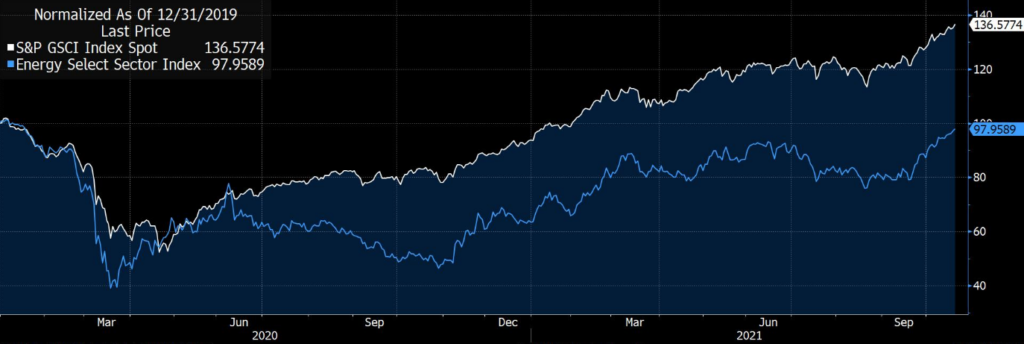
Oct 21, 2021 | Articles, Global Markets Update
For Accredited Investors Only as defined in the Monetary Authority of Singapore Securities and Futures Act (Cap. 289) and its subsidiary legislation. For Professional Investors Only as defined in the Securities and Futures Ordinance (Cap 571, Laws of Hong Kong) and its subsidiary legislation. This advertisement has not been reviewed by the Monetary Authority of Singapore.
Due to the dramatic downturn in the number of pandemic cases, Mr. Yamagiwa, Japan’s Government Minister in charge of COVID-19 commented that beginning in November (when the General Election is over) the government will implement measures to revitalize the COVID-19 inflicted (Japanese) economy by reducing border and travel restrictions, restrictions on restaurant business hours and so on.
Daishiro Yamagiwa, the minister in charge of economic revitalization, said in a Fuji TV program on the 17th, that all requests for restricting restaurant business hours, etc., which were implemented as measures (to protect the community) against the coronavirus, will be lifted if the number of new infections does not increase. He said, “we should be able to live (relatively) unrestricted by November at the earliest.”
The minister also said he would like to urgently prepare the easing of border measures for foreign visitors that require them to stay in home quarantine for 10 days, subject to those visitors providing vaccination certificates.
Original Japanese article below:
https://news.yahoo.co.jp/articles/c5756301d2c2ab867e5939285a2a126651345161
If you would like to receive further details on Odyssey or some of the most attractive private markets investment opportunities Asia has to offer, please get in touch with us.

Oct 21, 2021 | Articles, Global Markets Update
For Accredited Investors Only as defined in the Monetary Authority of Singapore Securities and Futures Act (Cap. 289) and its subsidiary legislation. For Professional Investors Only as defined in the Securities and Futures Ordinance (Cap 571, Laws of Hong Kong) and its subsidiary legislation. This advertisement has not been reviewed by the Monetary Authority of Singapore.
Market Highlights
The second half of September saw investors taking profits. Slowing global growth, persistent chain supply bottlenecks and inflation, rising US Treasury yields, a mixed reception for the approval of the US USD1tn infrastructure plan, issues in raising the US debt ceiling, and rising oil and gas prices all contributed to the cautious mood.
The S&P 500 fell 5% in September and the NSADAQ fell 7%. While volatility remains, we note some contradictory signals; 1) the equity market frets about persistent inflation but the 5Y UST is at only 1.1%, 2) investors are anticipating a major global growth slow-down but labour conditions are tight and the price of copper has been steady, and 3) prices of some commodities have surged but the price of equity exposures suggest few believe this will be sustained for any length of time, i.e. the SPGSCI (broad commodity index) is 37% above pre-COVID highs whereas the S&P 500 Energy Sector remains 2% below.

Source: Bloomberg
We expect Q3 results to shed some light on the impact of a slowing economy, supply chain issues and inflation. So far, the impact has not been as pronounced as feared and that should put the equity market on a firmer footing. With zero interest rates, rising vaccinations, and the prospect of Merck’s oral COVID treatment being distributed before year end, the probability that the world will steadily move towards normalisation that will continue to support earnings is higher than a reversal or lengthy stalling of the process, in our opinion.
One asset class that continues to surge is commodities. Rising oil prices is one cause, but even tighter supply dynamics have been occurring for much of the year in natural gas. This has exacerbated tight conditions in the fertiliser and coal markets.
Investment Strategy
Asset Allocation
The primary reason why we are long equity is that we expect the global normalization process to continue unabated over the next 3-6 months. We believe this will be positive for equity earnings and sentiment. However, because we are currently experiencing the second lull in economic growth this year and markets remain volatile, we would maintain a healthy cash hoard. In structural bull markets, falls of 5-10% in broad equity indices once or twice per year are not uncommon.
The same factor that is underpinning the equity market – ultra-low interest rates – is also the reason we are having difficulties finding opportunities in fixed income. Credit spreads are close to all-time tight levels, and with the medium-term prospect of rising interest rates, this creates a double headwind for the sector.
Themes
There are many forces currently at work that are widening the wealth gap. This includes the strength in the equity market over the last decade, the growing number of people investing in, or working in, technology related sectors, and the boom in the residential property market that is disproportionately benefitting the wealthy.
This theme can be expressed effectively through wealth management and boutique high-growth banks, and through luxury product producers. For the former this includes UBS, SVB Financial, First Republic Bank, and Signature Bank. The latter bank also has 20% of its assets in cryto-currency – a burgeoning asset class among the wealthy. Two leading luxury goods providers are LVMH and Estee Lauder.

Source: Bloomberg
This assists in maintaining a high weight in financials that may provide some protection against a rising rates environment. Some energy stocks would also assist. We would suggest a mix of direct commodity exposure and service providers that will likely benefit but not has high a daily correlation.
We suggest some stocks that benefit from a return to a pre-COVID lifestyle. Among these are two boutique sportswear producers, Lululemon and UnderArmour. Involvement in exercise and sports, both personally and spectating is starting to blossom again. People want to work off weight gained since COVID and football games in the US and Europe are again attracting huge crowds and encouraging exercise activities. We believe supply chain issues are transient, while demand is underestimated.
Our exposure to China is growing. At the end of September, it represented 3% of our equity exposure. It currently stands at 10%. We are cautiously optimistic that the market represents value with more than half the exposure from index ETFs. Until the Chinese government provides more tangent evidence of economic support, we remain conservative in our positioning.
Outlook
The equity market is experiencing many headwinds, but we continue to view them as transient rather than structural. Timing when to buy in such a market is difficult and most times the best advice is to just buy a good company at an attractive price and wait for sentiment to improve. We believe we currently have a good mix of investments, including those that benefit from some of the market’s concerns that we expect to partially mitigate those that will likely improve with equity sentiment.
Please note that we are no longer maintaining the Model or Horizon Portfolios. These have been replaced by the Odyssey Optimum Return Fund which is a multi-strategy fund that was launched on 13th September. We use this investable fund to express our investment ideas.
If you like to receive more information on our portfolio solutions, please contact us here: info@odyssey-grp.com.




